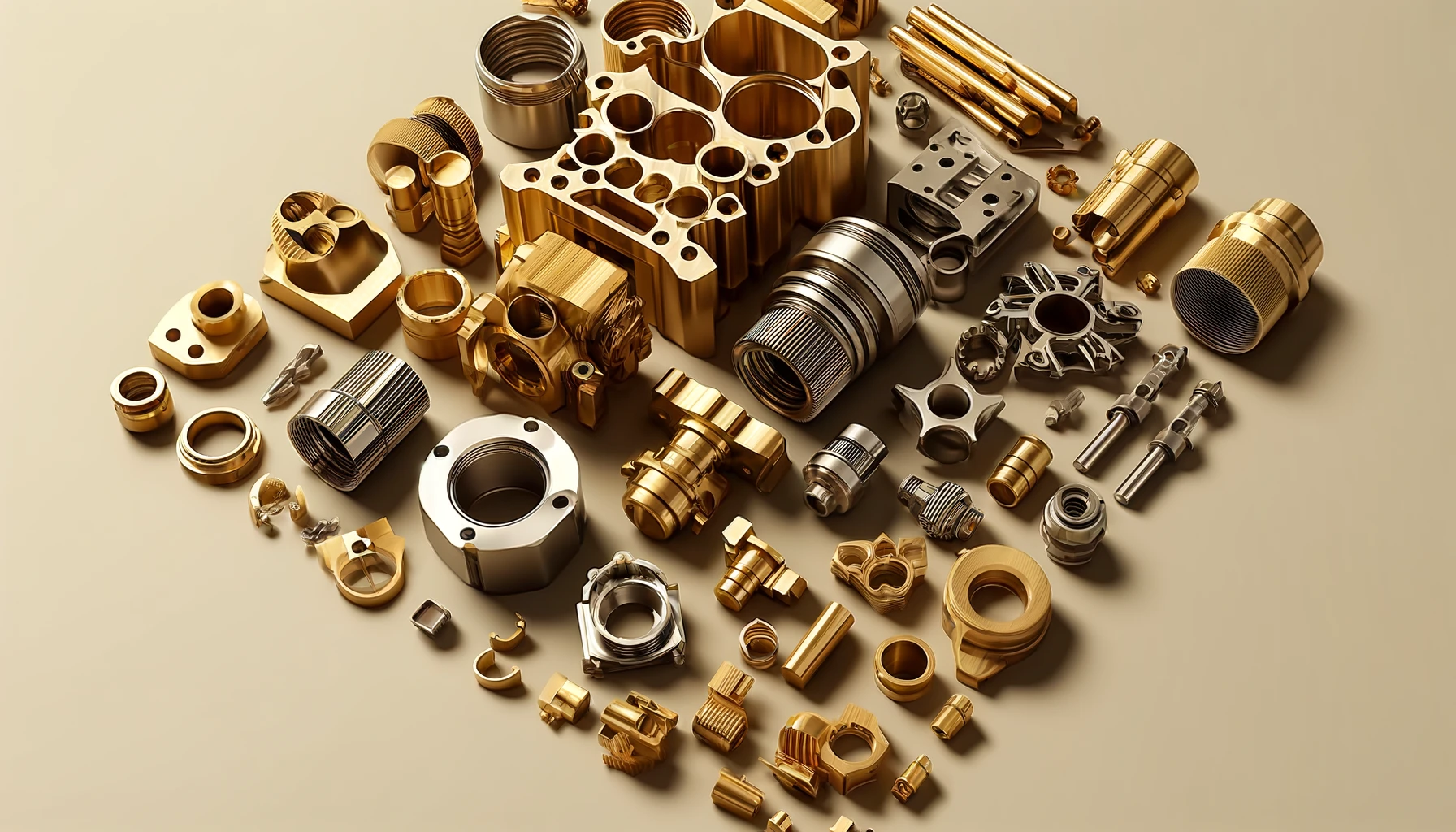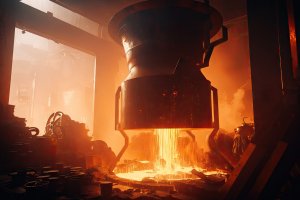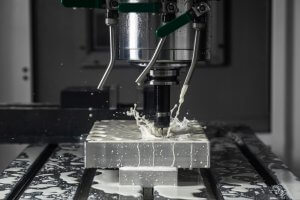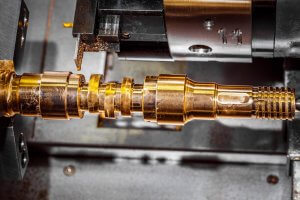What Are the Primary Cost Drivers in Brass CNC Machining?
Understanding the cost drivers is crucial for managing expenses effectively in the realm of CNC machining brass parts. The primary cost factors include material costs, machining time, labor, and tool wear. Brass, being relatively soft, tends to wear down tools less quickly than harder materials, but its cost as a raw material can be higher due to its composition of copper and zinc.
China Online CNC Machining Service
Detailed Table: Typical Cost Breakdown
| Cost Component | Percentage of Total Cost |
|---|---|
| Material Costs | 50% |
| Machining Time | 20% |
| Labor | 15% |
| Tool Wear and Maintenance | 10% |
| Administrative and Overhead | 5% |
This breakdown provides insights into how each component contributes to the overall cost and highlights strategies to mitigate these expenses. Material cost, being the largest component, suggests that significant savings could be achieved through strategic sourcing and negotiation with suppliers. Machining time can be optimized through efficient programming and setup, while minimizing labor costs may involve training and technological investments. Managing tool wear involves choosing the right tools and maintaining them properly to extend their life and performance.
How Can Material Selection Impact the Overall Cost?
Choosing the right grade of brass can significantly affect both the cost and performance of CNC machined parts. The cost-effectiveness of a brass alloy is determined by its suitability for the intended application, which impacts waste, machining speed, and end-product quality. Several brass grades offer varying benefits in terms of machinability, corrosion resistance, and aesthetic qualities, all of which can influence overall production costs.
Extended Comparison Table: Brass Material Grades and Their Impact on Cost
| Brass Grade | Machinability | Cost per Kg | Typical Uses | Corrosion Resistance | Aesthetic Quality | Strength |
|---|---|---|---|---|---|---|
| C36000 | High | Medium | Fittings, gears | Moderate | Good | Medium |
| C35300 | Medium | Low | Plumbing fixtures | High | Moderate | Low |
| C27000 | Low | High | Decorative items | Low | Excellent | High |
| C33000 | Medium-High | Medium-High | Architectural | Moderate | Good | Low |
| C46400 | Low | High | Marine applications | Very High | Moderate | High |
| C38500 | High | Medium | Architectural hardware | Low | Excellent | Medium |
This table provides a broader understanding of how different brass grades can be selected based on specific needs which directly affects cost-efficiency in production processes.
Why Is Supplier Selection Crucial to Cost Reduction?
Selecting the right supplier for brass CNC machining parts involves more than just comparing prices; it’s about establishing a partnership that can significantly influence the cost-effectiveness, quality, and reliability of the production process. Here are detailed factors illustrating why supplier selection is pivotal:
Supplier Capability and Technology
Choosing a supplier with advanced manufacturing capabilities and technology is crucial. Suppliers who invest in the latest CNC machinery and technologies can offer faster production times, higher precision, and lower costs per unit due to more efficient processes. Furthermore, suppliers who can provide comprehensive services, from material sourcing to finished part inspection, can streamline operations and reduce logistical costs.
Consistency and Reliability
A reliable supplier ensures consistent quality and timely delivery, which are essential for maintaining smooth production schedules and minimizing downtime. Suppliers with robust quality control systems and proven track records in meeting delivery timelines can help avoid the cascading costs of production delays and quality failures.
Material Sourcing and Costs
Suppliers who have established relationships with material producers or who bulk-purchase raw materials can often pass on cost savings to their customers. Effective supply chain management by the supplier can result in lower prices for raw materials like brass, which is a significant component of the overall cost in CNC machining parts.
Geographical Location
The location of the supplier affects shipping time and cost. Suppliers closer to your factory can reduce transportation costs, but production costs are the main cost. For example, in some countries (such as China), the production costs are very low, and transportation costs are not a big factor.
Long-term Partnerships and Negotiation Potential
Building long-term relationships with suppliers can lead to better pricing models, priority service, and more flexible terms. Suppliers are more likely to invest in understanding your specific needs and tailor their services accordingly if they perceive a commitment to a long-term partnership.
Case Study: Strategic Supplier Partnership
In a strategic move, XYZ Manufacturing formed a partnership with a supplier that integrated just-in-time delivery with an automated inventory system. This alignment reduced XYZ’s inventory holding costs by 20% and improved material availability, which boosted their production efficiency by 15%. This case exemplifies how a well-chosen supplier can contribute significantly to operational cost reduction.
Environmental and Compliance Considerations
Suppliers that adhere to environmental regulations and standards not only help ensure compliance but can also prevent potential fines and disruptions. Choosing a supplier committed to sustainable practices can also align with a company’s corporate social responsibility goals and enhance brand reputation.
What Techniques Can Optimize Machining Time and Reduce Waste?
Optimizing machining time and minimizing waste are pivotal in enhancing cost-efficiency in CNC machining operations. Effective techniques to achieve these goals encompass not only the use of the right machine settings and tools but also the adoption of advanced manufacturing technologies and strategic process planning.
Advanced Tooling and Tool Paths
The selection of cutting tools tailored to brass can significantly influence machining efficiency. Tools with geometries optimized for softer metals like brass can reduce tool wear and increase machining speed. Additionally, utilizing modern CAM (Computer-Aided Manufacturing) software to design efficient tool paths can minimize non-cutting time and material waste. Tool paths that optimize the cutting sequence and minimize idle travel can drastically reduce machining time.
Improved Cutting Fluids
Using the right cutting fluids is essential for efficient machining of brass. Fluids that enhance cooling and lubrication can extend tool life and improve surface finish, allowing for faster speeds and feeds. Furthermore, specialized fluids designed for non-ferrous metals like brass can prevent material adhesion to the tool, reducing the risk of imperfections and waste from failed parts.
Multi-Axis Machining
Employing multi-axis machining centers can significantly reduce setup times and machining operations by allowing multiple and complex operations to be performed in a single setup. This not only speeds up the production process but also reduces handling and setup errors, which are common sources of waste.
High-Speed Machining (HSM)
High-speed machining techniques are particularly effective for reducing machining time while maintaining precision. HSM strategies involve high spindle speeds and feed rates, which enable quicker material removal rates. Implementing HSM can lead to a substantial decrease in cycle times and improve the throughput of brass components without compromising quality.
Lean Manufacturing Principles
Integrating lean manufacturing principles into CNC machining operations can lead to significant improvements in both time management and waste reduction. Techniques such as 5S (Sort, Set in order, Shine, Standardize, Sustain) help organize the workplace, ensuring that tools and materials are easily accessible and workflows are streamlined. This organizational improvement minimizes downtime and inefficiencies that lead to excess material use and extended machining times.
Use of Automation and Robotics
Automation in the form of robotic loading and unloading of parts can greatly enhance machining efficiency. Automation reduces the time spent manually handling parts, thereby increasing machine utilization and reducing cycle times. Furthermore, robots can be programmed to optimize machining processes, consistently executing tasks with minimal error and waste.
Case Study: Efficiency in Machining
ABC Components adopted several of these strategies, most notably high-speed machining and the use of optimized tool paths, which collectively reduced their cycle times by 30% and decreased scrap rates by 10%. This approach not only improved their operational efficiency but also resulted in substantial cost savings across their production of brass parts.
How Does Efficient Inventory Management Contribute to Cost Reduction?
Implementing just-in-time (JIT) inventory practices allows companies to reduce inventory levels and associated costs while ensuring materials are available as needed.
Data Table: Impact of JIT Implementation
| Metric | Before JIT | After JIT |
|---|---|---|
| Inventory Levels | High | Reduced by 40% |
| Holding Costs | $20,000 | $12,000 |
| Order Lead Time | 4 weeks | 2 weeks |
| Stockouts per Year | 5 | 1 |
JIT and other inventory strategies are effective in minimizing holding costs and reducing the risk of excess stock or stockouts.
What Are the Long-Term Benefits of Investing in Quality Control?
Investing in rigorous quality control (QC) procedures not only ensures compliance with industry standards but also reduces the cost of non-conformance significantly.
Data Table: QC Investment vs. Savings
| Quality Control Measure | Initial Cost | Annual Savings |
|---|---|---|
| Enhanced Inspection | $10,000 | $50,000 |
| Statistical Process Control (SPC) | $15,000 | $75,000 |
| Certification and Training | $5,000 | $30,000 |
Quality control in manufacturing processes ensures that initial investments in QC lead to substantial savings.
How Can Automation in CNC Machining Reduce Costs?
Automation in CNC machining plays a crucial role in reducing labor costs and increasing production efficiency. Automated systems can operate continuously, reduce errors, and maintain consistent quality, which is especially important for large-scale production.
Case Study: Automation Success
In 2021, DEF Industries introduced automated loading systems and robotics into their brass parts production line. This resulted in a 25% reduction in labor costs and a 20% increase in production output. Automation not only reduced the direct human labor costs but also increased throughput and quality consistency, showing the powerful impact of integrating advanced technologies in traditional manufacturing processes.
Related Posts
- CNC Machining Aluminum vs. Brass: A Detailed Comparison for Precision Parts Manufacturing
Introduction to CNC Machining and Material Choices CNC (Computer Numerical Control) machining is a critical process in precision parts manufacturing. Its importance lies in its ability to create intricate and…
- CNC Machining Aluminum vs. Brass: A Detailed Comparison for Precision Parts Manufacturing
CNC Machining: Aluminum vs. Brass in Precision Parts Manufacturing The continuous quest for efficiency and precision has made CNC (Computer Numerical Control) machining a vital process in the manufacturing of…
- What are the requirements for CNC machining of bearing parts?
Bearings are common and important parts in the automotive industry, which can support transmission components and transmit torque. Generally, CNC machining centers are used to process bearing parts. So what…
- Precision CNC Machining of Steel: High-Volume Production
Precision CNC Machining and High-Volume Production As an integral part of modern manufacturing processes, Precision Computer Numerical Control (CNC) machining brings about unmatched accuracy and consistency in the production of…
- Aluminum CNC Machining Service for Custom Parts
Aluminum CNC machining stands at the forefront of modern manufacturing, epitomizing precision, versatility, and efficiency. With its widespread applications across industries ranging from aerospace to automotive and beyond, aluminum CNC…
- Precision CNC Machining: Aluminum vs. Brass for Your Custom Parts
Introduction to Precision CNC Machining and Custom Parts Precision CNC (Computer Numeric Control) machining is a cutting-edge manufacturing process that utilizes computer-controlled machinery to produce intricately designed custom parts, adhering…








